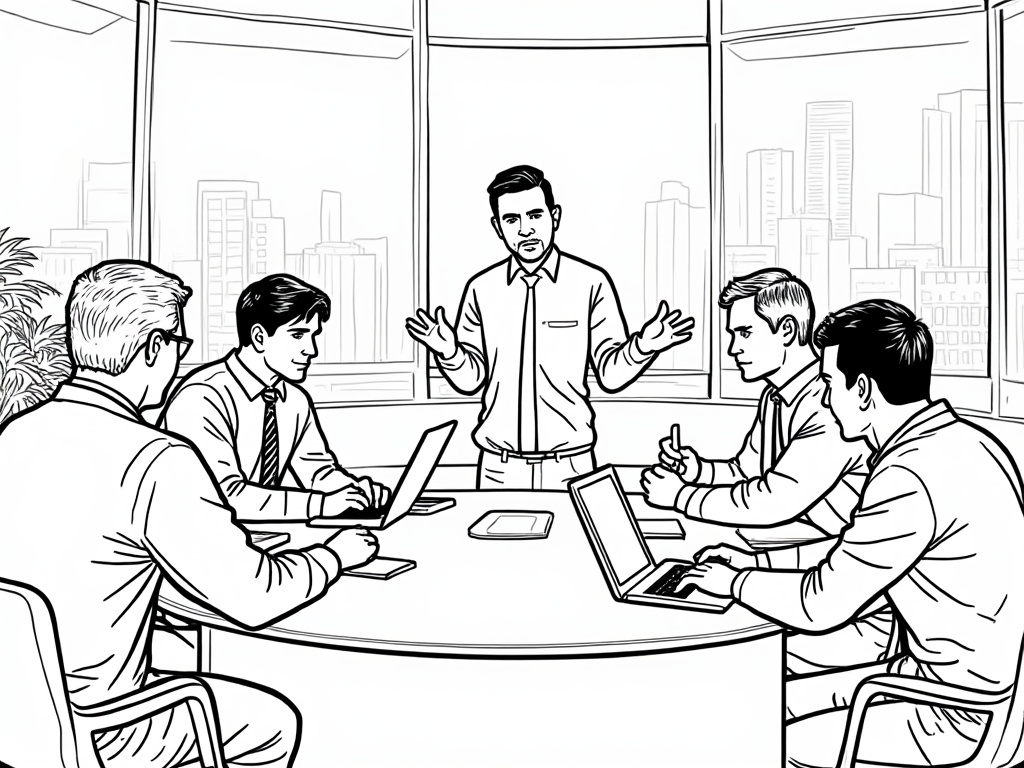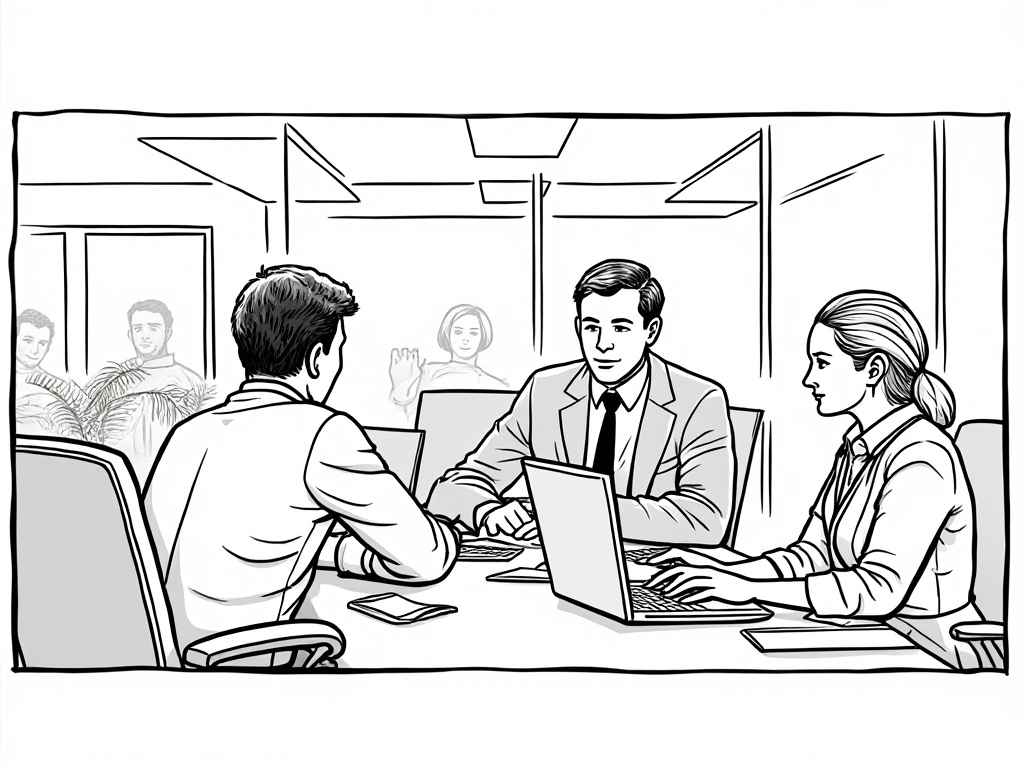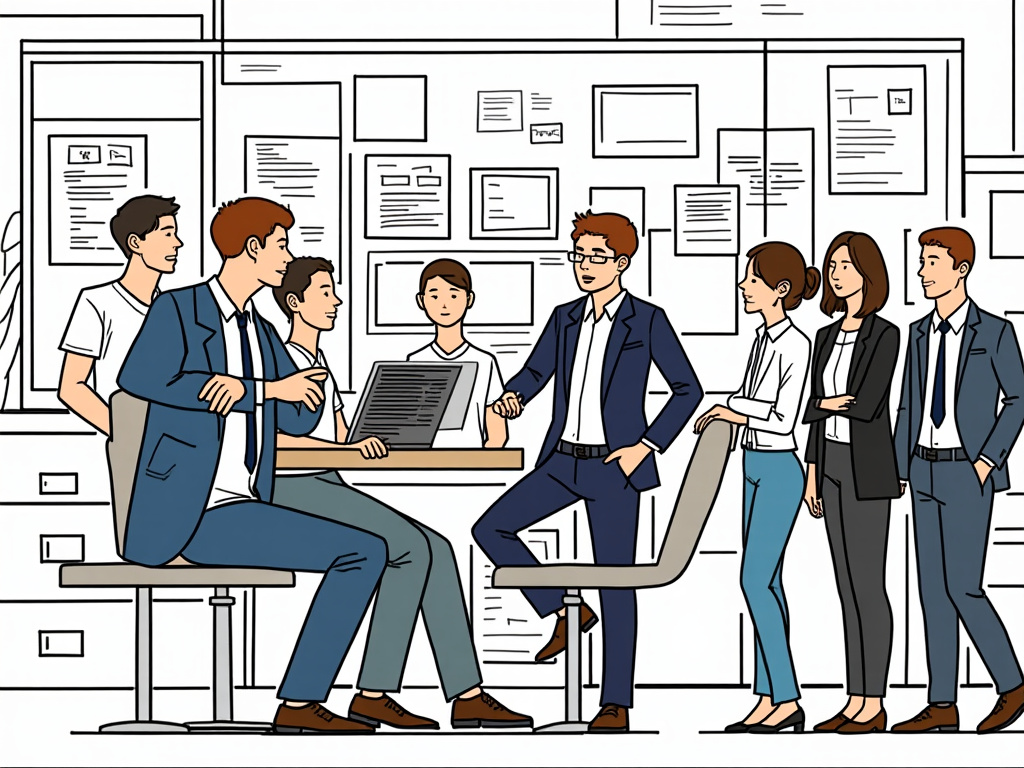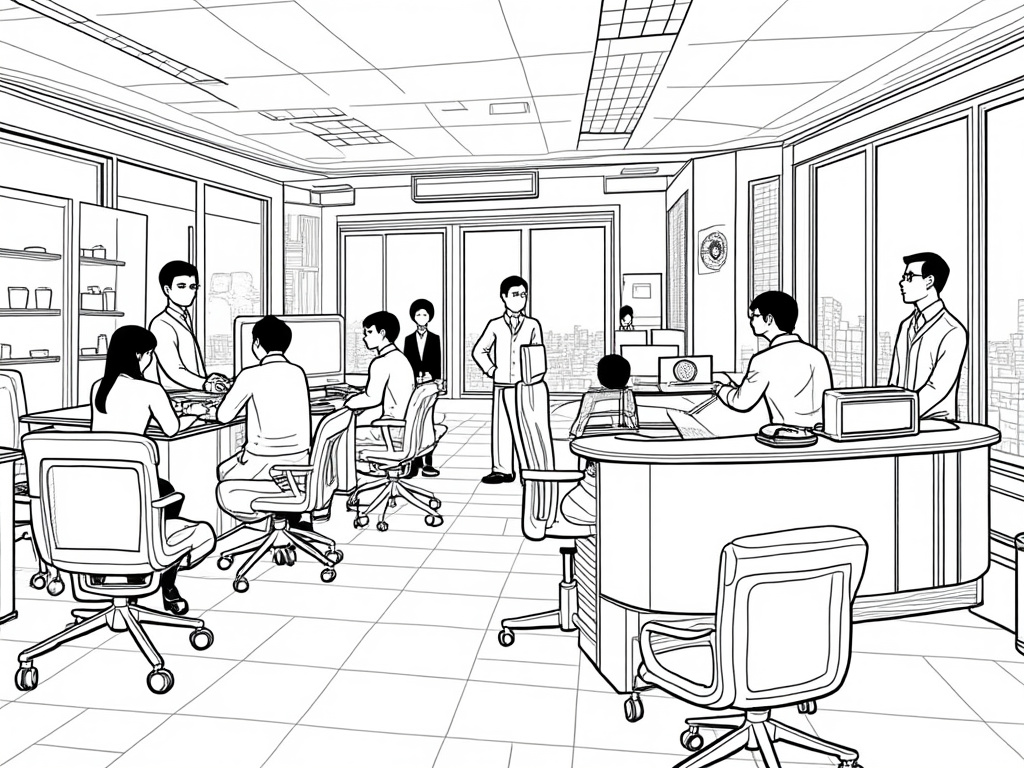
Services 1 Center: Transforming Government Access Through One-Stop Solutions
Reading time: 12 minutes
Table of Contents
- Introduction: The Evolution of Government Service Delivery
- The Services 1 Center Concept
- Key Benefits for Citizens and Businesses
- Implementation Framework and Best Practices
- Case Studies: Success Stories from Around the World
- Overcoming Implementation Challenges
- The Digital Dimension: Online Service Integration
- Future-Ready Service Centers: What’s Next?
- Frequently Asked Questions
Introduction: The Evolution of Government Service Delivery
Remember the last time you needed multiple government services? Perhaps you were starting a business, relocating to a new region, or handling family documentation. The traditional approach often meant visiting several offices across town, navigating different systems, and spending days (if not weeks) completing what should be straightforward processes.
The Services 1 Center model has emerged as a revolutionary approach to public service delivery, fundamentally changing how citizens and businesses interact with government agencies. But what exactly makes this concept so transformative?
At its core, a Services 1 Center consolidates multiple government services under one roof, creating a seamless, efficient experience. Rather than scattered bureaucratic interactions, citizens encounter a unified service environment designed around their needs—not administrative convenience.
“The most successful governments today are those that have reimagined service delivery from the citizen’s perspective. One-stop service centers represent the physical manifestation of user-centered governance,” notes Dr. Helena Reeves, Public Administration Researcher at Cambridge University.
The concept isn’t merely about physical consolidation—it represents a fundamental shift in how governments conceptualize their relationship with citizens, moving from fragmented bureaucracies toward integrated service ecosystems.
The Services 1 Center Concept
Core Principles of Integrated Service Delivery
The Services 1 Center model is built on several foundational principles that distinguish it from traditional government service approaches:
- Citizen-centricity: Services are organized around life events and citizen needs rather than administrative structures
- Operational integration: Back-end processes are streamlined across departments to enable seamless service delivery
- Service guarantees: Clear performance standards and service level agreements ensure accountability
- Multi-channel access: Physical centers are complemented by digital platforms, creating an omnichannel experience
- Continuous improvement: Regular feedback mechanisms and data analysis drive ongoing service refinement
Let’s consider a practical scenario: Starting a small business traditionally required visits to the business registry, tax authority, local municipality, and perhaps industry-specific regulators. A Services 1 Center transforms this experience by housing representatives from all relevant agencies in a single location, often with the capability to complete the entire process in one visit.
Architectural and Operational Components
Effective Services 1 Centers incorporate thoughtfully designed physical and operational elements:
- Welcoming reception areas with service navigators who direct visitors to appropriate service points
- Specialized service zones organized by service type or life events (business, family, property, etc.)
- Self-service terminals for routine transactions and information queries
- Private consultation spaces for sensitive matters requiring confidentiality
- Integrated document management systems enabling real-time information sharing between agencies
- Cross-trained staff capable of facilitating multiple service types
The physical design of these centers often incorporates open layouts with clear directional guidance, comfortable waiting areas, and accessible facilities to accommodate all citizens.
Key Benefits for Citizens and Businesses
Quantifiable Advantages
The Services 1 Center model delivers measurable improvements across multiple dimensions:
| Benefit Metric | Traditional Approach | Services 1 Center | Improvement Factor | Real-World Impact |
|---|---|---|---|---|
| Average service completion time | 7-14 days | Same day to 3 days | 70-80% reduction | Faster business launches, reduced economic friction |
| Number of visits required | 4-6 visits | 1-2 visits | 60-75% reduction | Time savings, reduced transportation costs |
| Administrative burden (paperwork) | 12-15 forms | 3-5 consolidated forms | 65% reduction | Decreased errors, improved compliance |
| Citizen satisfaction rating | 43-58% | 78-92% | 30-40% increase | Improved trust in government institutions |
| Cost per transaction | $45-65 | $22-38 | 40-50% reduction | More efficient use of public resources |
These improvements translate into tangible economic benefits: businesses launch faster, citizens save productive hours, and governments operate more efficiently with fewer resources.
Qualitative Improvements in the Citizen Experience
Beyond the numbers, Services 1 Centers transform the subjective experience of government interaction:
- Reduced frustration and confusion through clear guidance and streamlined processes
- Increased transparency as citizens gain visibility into processing status and requirements
- Greater accessibility for vulnerable populations through dedicated support services
- Enhanced agency accountability through visible performance metrics and feedback mechanisms
As Maria Gonzalez, a small business owner in Portugal, described her experience: “Previously, starting my café took three weeks of running between offices. With the Citizen Shop, I completed everything in one morning. It’s not just faster—it’s completely different psychologically. I left feeling supported rather than obstructed by my government.”
Implementation Framework and Best Practices
Strategic Planning Approach
Successful implementation of a Services 1 Center requires comprehensive planning across multiple dimensions:
- Service mapping and integration assessment: Identifying which services can be meaningfully consolidated and the technical requirements for integration
- Stakeholder engagement: Securing buy-in from participating agencies and addressing concerns about autonomy and resource allocation
- Legal and regulatory framework development: Creating the necessary authorities for cross-agency service delivery
- Technology infrastructure planning: Designing systems that enable secure information sharing while protecting privacy
- Training and organizational change management: Preparing staff for new roles and operational approaches
The most effective implementations adopt a phased approach, beginning with high-volume, relatively straightforward services before incorporating more complex processes.
Critical Success Factors
Research across global implementations reveals several factors that distinguish highly successful Services 1 Centers:
- Executive sponsorship at the highest levels of government
- Dedicated implementation teams with clear authority and accountability
- Process redesign rather than simply co-locating existing processes
- Common technology platforms enabling seamless information sharing
- Performance metrics that track both efficiency and citizen satisfaction
- Ongoing staff development to build service excellence capabilities
Pro Tip: Successful Services 1 Centers focus first on process redesign before technology implementation. As one implementation expert notes, “Digitizing a broken process just creates a faster broken process.”
Case Studies: Success Stories from Around the World
Estonia’s “State Portal”: Digital-First Integration
Estonia’s approach to service integration has become a global benchmark for digital government. Their physical service centers work in concert with the comprehensive e-Estonia digital platform, where citizens can access 99% of government services online.
Key elements of Estonia’s success include:
- A unified digital identity system enabling secure authentication
- The X-Road data exchange layer that allows secure information sharing between agencies
- Physical service points providing digital assistance for those with limited technology access or skills
The results speak for themselves: Estonia now processes 99% of business registrations online with company formation taking just 3-4 hours. Tax filing takes the average Estonian just 3-5 minutes annually. Physical service centers remain available but serve primarily as digital access and assistance points rather than transaction processors.
Brazil’s “Poupatempo”: Scale and Accessibility
Brazil faced unique challenges implementing its Poupatempo (“Time Saver”) centers across a vast territory with significant regional disparities. The program began in São Paulo and has expanded to over 70 centers serving millions of citizens.
Notable aspects of Brazil’s implementation include:
- Strategic location selection near public transportation hubs
- Extended operating hours including weekends
- On-site digital literacy support and assistance
- Mobile units that bring services to remote communities
A citizen from São Paulo’s outskirts described the impact: “Before Poupatempo, getting an ID replacement meant taking a day off work and paying for transportation to multiple offices downtown. Now I can do it on Saturday morning at the center near the train station—it’s changed how I think about government services.”
The program has reduced average service time from 2-3 hours to 19 minutes and achieves citizen satisfaction ratings consistently above 97%.
Overcoming Implementation Challenges
Organizational Resistance and Mitigation Strategies
Perhaps the most persistent challenge in Services 1 Center implementation is organizational resistance from existing agencies. This resistance typically manifests as concerns about autonomy loss, resource allocation, and disruption to established workflows.
Effective mitigation strategies include:
- Early and continuous stakeholder engagement to address concerns proactively
- Clear governance frameworks that define decision-making authority and accountability
- Shared success metrics that align incentives across participating agencies
- Visible executive sponsorship reinforcing the priority of the initiative
- Phased implementation approaches that demonstrate success before expanding scope
As one implementation leader noted, “We spent almost 40% of our project time on stakeholder management and change leadership. The technology was the easy part—changing mindsets was the real challenge.”
Technical Integration Hurdles
Legacy systems and data incompatibility present significant technical challenges for service integration. Successful implementations address these through:
- Service interface layers that connect disparate systems without requiring complete replacement
- Data standardization initiatives establishing common formats and definitions
- Secure identity management solutions enabling cross-system authentication
- Modular architecture approaches allowing incremental integration
Visualization: Citizen Time Savings by Service Type (Average Hours Saved)
The Digital Dimension: Online Service Integration
Balancing Physical and Digital Service Channels
Modern Services 1 Centers operate as part of an omnichannel service ecosystem where physical locations complement digital service delivery. This integration requires thoughtful balance between channels:
- Digital-first approach for high-volume, routine transactions
- In-person services for complex situations requiring consultation
- Digital assistance points within physical centers to support online service access
- Hybrid processes where online initiation connects to in-person completion when necessary
The most successful implementations create consistent experiences across channels, with citizens able to seamlessly move between digital and physical touchpoints throughout their service journey.
Technology Enablers for Integrated Service Delivery
Several key technologies enable the seamless operation of Services 1 Centers:
- Customer relationship management (CRM) systems tracking citizen interactions across multiple services
- Workflow management platforms routing service requests between agencies
- Digital identity solutions enabling secure authentication and authorization
- Data exchange frameworks facilitating secure information sharing
- Analytics platforms identifying service improvement opportunities
Singapore’s LifeSG platform exemplifies this approach, offering both a digital portal and integrated physical service centers. The system tracks life events (birth, education, career, retirement) and proactively suggests relevant services at appropriate times. Physical centers provide assistance for those who need help navigating digital options.
As Lee Hsien Yang, a Singaporean civil service advisor, explains: “We don’t think in terms of digital versus physical services. We design life journeys that incorporate both channels based on citizen needs and preferences.”
Future-Ready Service Centers: The Government Experience Revolution
The Services 1 Center concept continues to evolve, with several emerging trends shaping the next generation of government service delivery:
Tomorrow’s Innovations in Citizen-Centric Service
- Predictive service delivery using data analytics to anticipate citizen needs and proactively offer relevant services
- AI-assisted service navigation helping citizens identify all relevant services for their situation
- Blockchain-enabled verification reducing document requirements through trusted digital credentials
- Virtual service centers using augmented and virtual reality to create immersive remote service experiences
- Personalized service journeys adapting processes to individual circumstances and preferences
These innovations promise to further reduce administrative burden while creating increasingly responsive government services.
Preparing Your Organization for Service Transformation
For government leaders considering Services 1 Center implementation, preparation should focus on:
- Service journey mapping to understand current citizen experiences
- Cross-agency collaboration frameworks establishing governance for integrated services
- Technology readiness assessment identifying integration requirements and gaps
- Citizen research and co-design involving end-users in service design
- Change management strategy preparing staff for new service approaches
The journey toward integrated service delivery isn’t simply about efficiency—it fundamentally transforms the relationship between citizens and their government. As one citizen commented after using Denmark’s integrated service center: “For the first time, I felt like the government was working for me rather than making me work to access my rights and benefits.”
Frequently Asked Questions
How do Services 1 Centers maintain data privacy while sharing information across agencies?
Services 1 Centers implement several critical safeguards to protect privacy while enabling necessary information sharing. These typically include: purpose-specific consent mechanisms that give citizens control over data sharing; secure data exchange protocols with end-to-end encryption; access controls limiting information visibility to authorized staff; comprehensive audit trails tracking all data access; and privacy-by-design principles embedded in all systems. The most advanced implementations, like Estonia’s X-Road system, use distributed architecture where data remains with source agencies rather than being centralized, with secure queries providing only necessary information for specific services.
What is the typical return on investment for governments implementing Services 1 Centers?
Studies across multiple countries show that well-implemented Services 1 Centers typically achieve ROI of 300-500% over a 5-year period. The financial returns come from multiple sources: reduced operational costs through shared facilities and staff; decreased processing time and associated labor costs; lower document management expenses through digitization; and indirect economic benefits from faster business formation and reduced bureaucratic friction. For example, Portugal’s Citizen Shop program recovered its implementation costs within 2.3 years and has delivered annual savings of approximately €25 million while also generating significant economic activity through faster business services.
How can rural or underserved communities benefit from the Services 1 Center model?
The Services 1 Center approach actually offers distinct advantages for rural and underserved communities through several adaptations: mobile service units that travel to remote areas on scheduled routes; smaller satellite centers in rural hubs operating on rotating schedules; digital service kiosks installed in existing community facilities like libraries and post offices; and video-conferencing services connecting citizens to specialists not available locally. Brazil’s Poupatempo program and Canada’s Service Canada both demonstrate successful rural adaptations, with citizen satisfaction in rural areas often exceeding urban ratings due to the dramatic improvement over previously limited service access.
Your Transformation Roadmap: From Concept to Citizen Impact
Implementing a Services 1 Center represents more than an administrative improvement—it’s a fundamental reimagining of the government-citizen relationship. As you consider this journey for your organization, focus on these strategic priorities:
- Begin with citizen research: Map existing service journeys to identify pain points and integration opportunities
- Secure leadership alignment: Build executive consensus around service transformation goals and governance
- Start with high-impact pilots: Select service clusters with significant citizen impact and implementable integration pathways
- Invest in your people: Develop the service mindset and cross-functional capabilities your staff will need
- Measure what matters: Establish metrics that balance operational efficiency with citizen experience
Remember that successful implementation is iterative, not instantaneous. The most effective Services 1 Centers evolved through continuous improvement driven by citizen feedback and operational insights.
What could your government achieve by freeing citizens from administrative burden and redirecting those hours toward productive economic and social contribution? The Services 1 Center model isn’t merely about making government more efficient—it’s about creating the foundation for a more dynamic, creative, and productive society.
How will you reimagine your relationship with the citizens you serve?
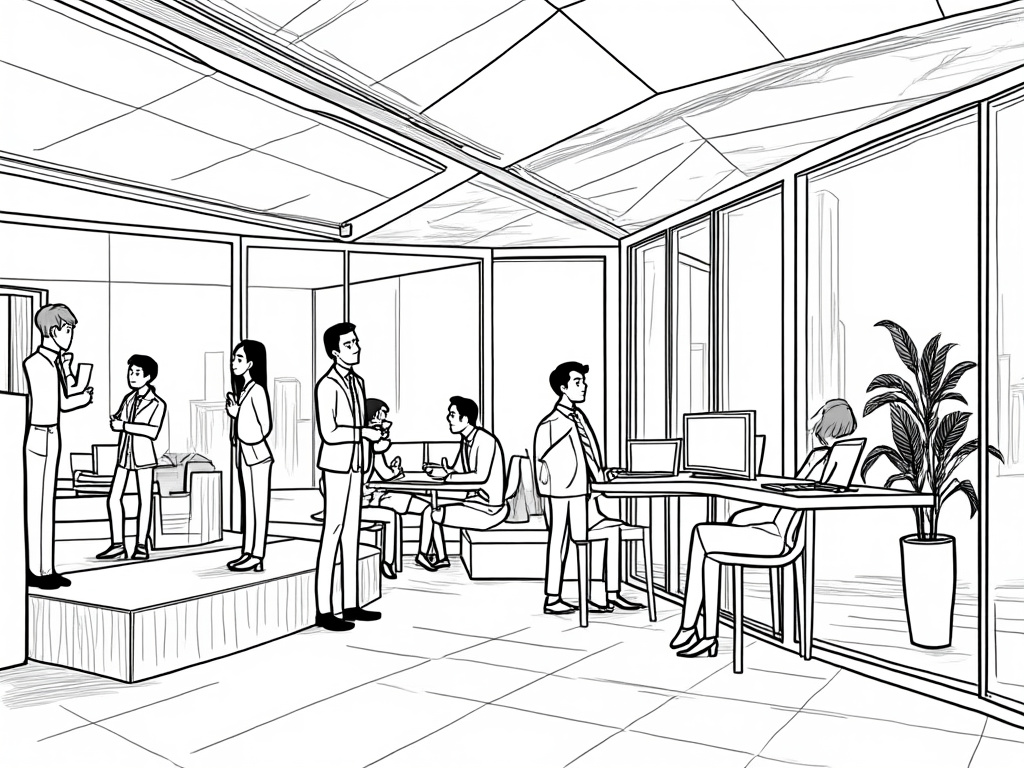
Article reviewed by Jakub Nowak, Trade Analyst | Studying EU-GCC Business Opportunities, on May 15, 2025
